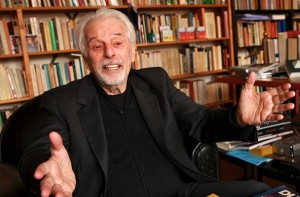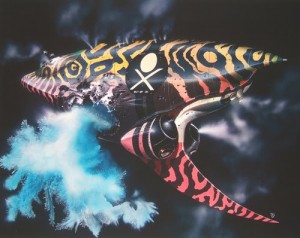
While audiences often feel that they are inundated with movies every week, it’s much harder to get stories to the screen than one might think – particularly when the filmmakers strive to break molds and chart new cinematic territory. Over the years, there have been many interesting projects that have fallen apart. One of the most famous examples is an adaptation of a classic science fiction novel by a famed cult filmmaker from Chile.
Jodorowsky’s Dune chronicles the director’s unique vision and the story of how it all dissolved just before reaching fruition. It’s impossible to say whether the final product would have truly been a masterpiece that the filmmakers suggest, but regardless this exposé is a fascinating exploration of the creative process.
 After finding success with his psychedelic and bizarre films El Topo (1970) and The Holy Mountain (1973), director Alejandro Jodorowsky teamed with French producer Michel Seydoux to mount a lavish, big-budget take on Frank Herbert’s novel Dune. Documentary filmmaker Frank Pavich allows Jordorowsky (now 84 years old) to tell the story of the project’s inception in 1975 to its collapse two years later, using additional interviews with many of the participants (or “spiritual warriors”) recruited to bring his vision to life.
After finding success with his psychedelic and bizarre films El Topo (1970) and The Holy Mountain (1973), director Alejandro Jodorowsky teamed with French producer Michel Seydoux to mount a lavish, big-budget take on Frank Herbert’s novel Dune. Documentary filmmaker Frank Pavich allows Jordorowsky (now 84 years old) to tell the story of the project’s inception in 1975 to its collapse two years later, using additional interviews with many of the participants (or “spiritual warriors”) recruited to bring his vision to life.
Interestingly, extensive pre-production had been completed on the film, and it helps to give viewers a good idea of what the finished product would have looked like. Complete storyboards are photographed and animated to help viewers understand the sequences and give a sense of its truly epic scope. This includes an incredible opening shot that moves through the universe, passing space battles with magical spice spilling out of exploding ships before the camera closes in on the title planet. It’s clear that the visuals as imagined would have been jaw-dropping.
Jodorowsky remains an incredibly charismatic and passionate artist onscreen. He’s a born storyteller and as he goes over the material describing both his personal and fictional story, his excitement also wraps viewers up in his unusual vision. The director shares amusing tales of how he convinced the likes of Orson Welles, Salvadore Dali, David Carradine and Mick Jagger to appear in the film. By the time he’s finished his tale, most audience members will feel like they want to step forward and help out – he’s so magnetic that it’s easy to see how anyone would believe it a tragedy that the film was never shot.
 It’s also easy to understand how Hollywood ultimately wouldn’t provide the final financing necessary to begin shooting. Not only was the movie proposed well before the success of Star Wars, but it would have still retained all of Jodorwsky’s trippy eccentricities. The director also states that his goal was not only to provide viewers with a filmic LSD trip, but to open minds and change audience expectations in narrative movie-making. This, combined with the fact that it may have been not just two or three, but several hours in length made studios leery. One wonders if those involved ever considered paring down their script and making a scaled down version, but the interview suggests that Jodorowsky would never have agreed to it.
It’s also easy to understand how Hollywood ultimately wouldn’t provide the final financing necessary to begin shooting. Not only was the movie proposed well before the success of Star Wars, but it would have still retained all of Jodorwsky’s trippy eccentricities. The director also states that his goal was not only to provide viewers with a filmic LSD trip, but to open minds and change audience expectations in narrative movie-making. This, combined with the fact that it may have been not just two or three, but several hours in length made studios leery. One wonders if those involved ever considered paring down their script and making a scaled down version, but the interview suggests that Jodorowsky would never have agreed to it.
While it’s a disappointment that the film was never made, the documentary also does an impressive job of showing the influence that the failed project had on future productions. Perhaps the most notable is Alien (1979), a project that reunited the uncompleted Dune crew members Dan O’Bannon, H.R. Giger and French artist Moebius.
Considering all of the talent involved in front of and behind the camera, it’s a shame that this adaptation never came to pass. But Jodorowky’s Dune does the next best thing, giving viewers a glimpse of his grand vision and letting the man himself inspire viewers that they should always strive to achieve the impossible.


